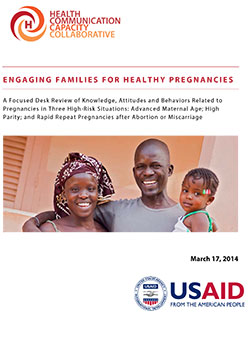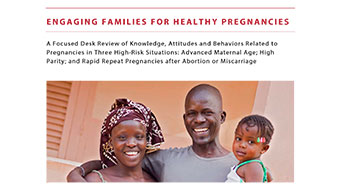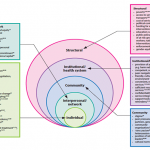New Report Examines the Drivers of Advanced Maternal Age and High Parity Pregnancies
 What drives women to have pregnancies after the age of 35 or to have five or more children? Both of these pregnancies present high risks to both the mother and newborn.
What drives women to have pregnancies after the age of 35 or to have five or more children? Both of these pregnancies present high risks to both the mother and newborn.
Women aged 35 or older are more prone to pregnancy complications, as well as greater risk of maternal mortality. Adverse outcomes for the newborn are also higher, including intra-uterine fetal death, low birth weight, prematurity, stillbirth, and chromosomal abnormalities. The risks of high parity pregnancies are similar, with increase adverse maternal and fetal outcomes, the most common of these being maternal hypertension, diabetes, anemia, postpartum hemorrhage, placental complications, fetal malpresentation, and prematurity.
These adverse outcomes, and the role of family planning in preventing them, were highlighted this week by Katie Taylor, USAID’s Deputy Assistant Administrator, in her opening remarks for a two-day technical meeting convened by USAID, E2A, MCHIP, and the Health Resources and Services Administration (HRSA): Throughout the Reproductive Life Course: Opportunities and Challenges for Empowering Girls and Women.
However, little research has been conducted to understand the behavioral determinants driving these high-risk pregnancies. A new report by HC3 aims to fill that gap. Engaging Families for Healthy Pregnancies is a focused desk review examining the knowledge, attitudes and behaviors related to pregnancies in three high-risk situations: advanced maternal age; high parity; and rapid repeat pregnancies after abortion or miscarriage.
Behavioral drivers that emerged shared some similarities but differed by country context. Key drivers included desire for a son; family and spousal pressure to have large families, or women’s own desire for a large family; the death of a child; desire to have children following remarriage; contraceptive failure; religious or cultural prohibitions on use of contraception; lack of availability of long-acting methods; discontinuation of contraception; or simply that the pregnancy was “by mistake.”
The limited amount of literature identified by the review is a cry for further context-specific research to understand these reasons further. HC3 is planning to carry out such a study in Niger and Togo later this year and will use those findings to develop a set of core tools and resources to strengthen programs aimed at preventing these high-risk pregnancies. Stay tuned!








Leave a Reply
Want to join the discussion?Feel free to contribute!